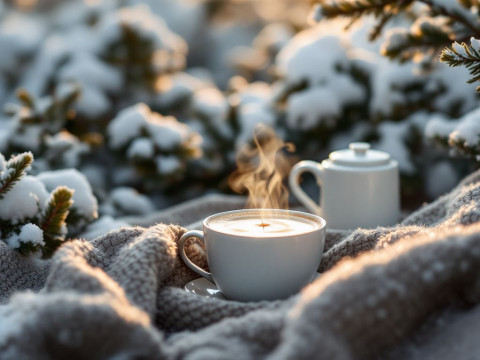When the first flurries of snow start wafting down from the sky, there’s a unique kind of magic in the air, right? But along with those dreamy snow-filled days, many of us contend with the dreaded winter acne. Oh yes, while it’s fun to build snowmen and sip on hot cocoa, the seasonal skin woes can throw a frosty wrench into our lovely winter vibes.
Have you ever looked in the mirror post-snowball fight and wondered what gives? What exactly about snow days sends your skin spiraling into chaos? Trust me, you’re not alone. Winter weather can be harsh, no doubt, but there’s a trick to surviving it with your glowing skin intact. Let’s unpack this winter skin drama together, shall we?
The Snowy Culprit: Why Snow Days Are Tough on Skin
The primary villain in our tale is, unsurprisingly, the cold. Dipping temperatures might mean we can finally justify buying those cozy socks, but they also cause havoc on our delicate skin. Winter acne isn’t just an inconvenience; it’s an art form of frustration, thanks to all those temperature tantrums and dry indoor heating.
Add wind to that mix, and our skin feels stripped bare, tiny defenses scattered in the icy breeze. Combine that with snow exposure when you’re outside, and you’re adding another layer of complication. Snow acts as a reflective agent—the hint of UV rays bouncing wildly off the pristine white surface and sneaking double the sun exposure to our unsuspecting faces.
Winter Acne Mayhem: It’s More Than Just Dryness
Now, let’s talk acne, specifically winter acne. It’s not just about dry skin flakes settling into pores—it’s about your skin’s oil glands overcompensating for the dryness. Sounds counterproductive, doesn’t it? It’s like your skin behaves like that one eager coworker—trying to get everything done but ends up creating more mess. The cold air signals your skin to maintain moisture by amping up oil production, causing surges in pimples you didn’t even invite to the party. We can’t even.

Breaking It Down: The Winter Skincare Plan
For your skin game plan, think of it in stages—cleanse, exfoliate, moisturize, and protect. Simple enough, right? It might sound old hat, but this process is the foundation for blocking winter acne from throwing a never-ending storm on your face.
1. Cleanse Like You Mean It
Find a clean slate with gentler products. Opt for a mild, hydrating cleanser that doesn’t strip your skin further. Think creamy over foamy. Your skin just endured a roll in the snow, after all!
2. Exfoliation 101
But easy there—opt for mild exfoliation. Over-exfoliating is like aggressively whipping cream; you’ll end up right back at the dryness-cycle start. Aim for once or twice a week to keep those dead skin cells from joining oily rebellions.
3. Hydration is Essential
The key player on snow-deck days is undoubtedly your moisturizer. Imagine placing a comforting cashmere blanket over your skin, protecting it from harsh elements. Choose moisturizers rich in emollients and occulents to seal all that moisture right in. Look for ingredients like hyaluronic acid or ceramides.
Winter Protection Tactics

What about when you do brave the outdoors? Beyond cozy scarves and knit hats, your skin needs love too.
Sunscreen Surprise
Surprised seeing sunscreen mentioned for winter? It’s a necessity! Yes, even when it’s cloudy—those sneaky UV rays are bouncing off the snowy ground and require a hardy sunblock defense on your behalf. Choose a broad-spectrum SPF of at least 30, and apply it like you really mean it before heading outside.
Accessorize Wisely
Scarves and beanies aren’t just fashion statements; they shield gentle facial skin from punishing winds. Remember not to forget the lips—they need some of that barrier action, too. Lip balms with SPF exist, my friend, and they’re game-changers.
Extra Winter Skin Nuggets: Trust the Experts
Here’s a little secret from dermatologists: Humidifiers are your unsung hero. Trust me on this one; they help balance out the indoor dryness your skin loves to bicker with. Set one up in your room and watch the humid mysticism work.
And yes, hydration from within also counts. It may feel like futile advice when it’s snowing, but keep those liquids flowing. Your skin will sip up the goodness, rewarding you with balance—you’ll see.

Common Winter Skin Care Mistakes
But, wait—some furrows in brow trails tell me there are a couple of rituals we absolutely need to ditch for winter skin salvation.
- Hot Showers: I know, tempting as they are, they actually strip away essential oils. Settle for lukewarm temperature.
- Skipping Moisturizer: A strict no—apply your moisturizer right out of the bath/shower when your skin is still damp.
Conclusion: Conquer the Chill with Confidence
So there you go—no longer does your winter skin narrative need its stormy doldrums. Tackling winter acne, snow exposure, and achieving protection at all angles is simply a matter of donning the right gear and following your skin’s guiding cues.
So next time you feel the call to wander into a snowy landscape, do it with gusto! Armed with a little winter skincare wisdom, those flakes won’t stand a chance against your radiance.
Embrace the cold season with newfound insight and tackle those snowbound trails with both feet forward, ensuring your skin’s glow matches not only the purity of snow but also the sunny resilience we all carry into every season.
And remember: backed by the right routines, every snow-laced day is a great skin day!
Frequently Asked Questions
What is winter acne?
Winter acne refers to the acne breakouts that occur or worsen during the winter season. This is primarily due to the dry air, both outdoors and indoors, which causes the skin to produce more sebum, leading to clogged pores and breakouts[3][5].
Why does winter acne occur?
Winter acne occurs because the dry air, lack of humidity, and indoor heating systems strip the skin of its natural moisture. In response, the body produces more sebum, which can clog pores. Additionally, the dry skin is more prone to flaking, and the skin becomes more vulnerable to bacteria, leading to inflammation and breakouts[1][3][5].
How can I prevent winter acne?
To prevent winter acne, it is important to maintain skin hydration. This can be achieved by bathing in lukewarm water, limiting hot showers, using gentle cleansers, and moisturizing after showering or bathing. Exfoliating regularly with products containing retinol, retinoid, or salicylic acid can also help, but ensure to moisturize afterward. Avoiding hot water, heavy comfort foods, and excessive face touching can also reduce the risk of breakouts[1][3][5].
What are the best treatments for winter acne?
The best treatments for winter acne involve using moisturizers that lock in moisture, especially after showering. Mild skin cleansers should be used, and harsh exfoliating scrubs should be avoided. Spot treatments with retinoids and salicylic acid can be effective, but they should be used sparingly to avoid further drying the skin. If your usual acne treatments are not effective, consulting a dermatologist for personalized advice and treatment is recommended[3][5].
References









